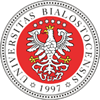Proszę używać tego identyfikatora do cytowań lub wstaw link do tej pozycji:
http://hdl.handle.net/11320/17838Pełny rekord metadanych
| Pole DC | Wartość | Język |
|---|---|---|
| dc.contributor.author | Kołodko, Piotr | - |
| dc.date.accessioned | 2025-01-15T08:53:10Z | - |
| dc.date.available | 2025-01-15T08:53:10Z | - |
| dc.date.issued | 2024 | - |
| dc.identifier.citation | Miscellanea Historico-Iuridica, T. 23, Z. 1, 2024, s. 10-25 | pl |
| dc.identifier.issn | 1732-9132 | - |
| dc.identifier.uri | http://hdl.handle.net/11320/17838 | - |
| dc.description.abstract | In the history of the Roman Republic, the office of appears to be the most mysterious, and at the same time the least understood, as is evident from the scattered source materials, especially literary accounts. This does not mean, however, that quaestorship was unimportant in political life. One should bear in mind that it was the first step in an official’s career in the ancient Rome. Thus, it opened the door to the office of a praetor or a consul, the most coveted and prestigious magistracies, but of course there are known exceptions to this rule. Although the origins of quaestorship date back to the fifth century BC, the history of quaestor Ostiensis, an enigmatic official not mentioned in historical records which contained only pieces of information, primarily in literary accounts, took a very different shape. He did not appear on the pages of Roman history until the 3rd century BC. The basic facts about quaestor Ostiensis were provided by Cicero, so the analysis of this information is the primary task. The information contained in historical sources is completed in literary accounts by Velleius Paterculus and Lydus, as well as in inscriptions. Their common feature is that they are remarkably laconic, which makes it very difficult to present precisely the scope of the powers of quaestor Ostiensis and to show their possible modification in connection with the changing situation in the ancient Rome. Within the framework of the considerations presented herein, it will be necessary to grasp the historical moment when quaestor Ostiensis gave way to a new magistracy, praefectus annonae. | pl |
| dc.language.iso | en | pl |
| dc.publisher | Wydawnictwo Uniwersytetu w Białymstoku | pl |
| dc.rights | Uznanie autorstwa-Na tych samych warunkach 4.0 Międzynarodowe (CC BY-SA 4.0) | - |
| dc.rights.uri | https://creativecommons.org/licenses/by-sa/4.0/deed.pl | - |
| dc.subject | quaestor | pl |
| dc.subject | quaestor Ostiensis | pl |
| dc.subject | ancient Rome | pl |
| dc.subject | Roman law | pl |
| dc.title | A Few Remarks about Quaestor Ostiensis | pl |
| dc.type | Article | pl |
| dc.rights.holder | Uznanie autorstwa-Na tych samych warunkach 4.0 Międzynarodowe (CC BY-SA 4.0) | pl |
| dc.identifier.doi | 10.15290/mhi.2024.23.01.01 | - |
| dc.description.Email | p.kolodko@uwb.edu.pl | pl |
| dc.description.Affiliation | Uniwersytet w Białymstoku (University of Bialystok, Poland) | pl |
| dc.description.references | Alexander Michael Christian, Trials in the late Roman Republic 149 to 50 BC, Toronto 1990. | pl |
| dc.description.references | Amielańczyk Krzysztof, Crimina legitima w rzymskim prawie publicznym, Lublin 2013. | pl |
| dc.description.references | Banach Tomasz, Res Publica est res Populi. Myśl polityczno-prawna Marka Tulliusza Cycerona, Łódź 2023. | pl |
| dc.description.references | Berrendonner Clara, À la recherche du quaestor Ostiensis, [in:] Ostia, l’Italia e il Mediterraneo. Intorno all’opera di Mireille Cébeillac-Gervasoni. Atti del Quinto seminario ostiense, Roma-Ostia, 21–22 febbraio 2018, eds. M. L. Caldelli, N. Laubry, F. Zevi, Rome 2021. | pl |
| dc.description.references | Broughton Thomas Robert Shannon, The Magistrates of the Roman Republic, vol. I: 509 B.C.–100 B.C.; vol. II: 99 B.C.–31 B.C., New York 1951–1952. | pl |
| dc.description.references | Caimi James, Burocrazia e diritto nel De magistratibus di Giovanni Lido, Milan 1984. | pl |
| dc.description.references | Cébelliac-Gervasoni Mireille, Les rapports institutionnels et politiques d’Ostie et de Rome de la République au IIIe siècle ap. J.-C., «Mélanges de l’école française de Rome» 2002, vol. 114, no. 1. | pl |
| dc.description.references | Cébelliac-Gervasoni Mireille, Quaestor Ostiensis: une function ingrate?, [in:] HOC QVOQVE LABORIS PRAEMVIM. Scritti in onore di gino Bandelli, ed. M. Chiabà, Trieste 2014. | pl |
| dc.description.references | Chandler David C., Quaestor Ostiensis, “Historia. Zeitschrift für Alte Geschichte” 1978, vol. 27, no. 2. | pl |
| dc.description.references | Coarelli Filippo, I quaestores classici e la bataglia delle Egati, [in:] HOC QVOQVE LABORIS PRAEMVIM. Scritti in onore di gino Bandelli, ed. M. Chiabà, Trieste 2014. | pl |
| dc.description.references | Coarelli Filippo, Saturnino, Ostia e l’annona. Il controllo e l’organizzazione del commercio del grano tra II e I secolo a.C., [in:] Le Ravitaillement en blé de Rome et des centres urbains des débuts de la République jusqu’au Haut-Empire. Actes du colloque international de Naples, 14–16 Février 1991, Rome 1994. | pl |
| dc.description.references | Dauget-Gagey Anne, «Splendor aedilitatum»: l’édilité à Rome (Ier s. avant J.-C.-IIIe s. après J.-C.), Rome 2015. | pl |
| dc.description.references | de Martino Francesco, Storia della costituzione romana, vol. 2, Naples 1973. | pl |
| dc.description.references | Garnsey Peter, Rathbone Dominic, The Background to the Grain Law of Gaius Gracchus, “The Journal of Roman Studies” 1985, vol. 75. | pl |
| dc.description.references | Gnoli Tomasso, Navalia: guerre e commerci nel Mediterraneo Romano, Rome 2012. | pl |
| dc.description.references | Gruen Erich Stephen, Roman Politics and the Criminal Courts 149–79 B.C, Cambirdge–Massachusetts 1968. | pl |
| dc.description.references | Harris William Vernon, Lydus „De Magistratibus” 1.27: a Reply, “The Bulletin of the American Society of Papyrologists” 1979, vol. 16, no. 3. | pl |
| dc.description.references | Harris William Vernon,, The Development of the Quaestorship 267–81 B.C., “The Classical Quarterly” 1976, vol. 76, no. 1. | pl |
| dc.description.references | James Paul, Food Provisions for Ancient Rome. A Supply Chain Approach, London–New York 2021. | pl |
| dc.description.references | Kamińska Renata, Zarys kompetencji edylów jako urzędników miejskich, „Studia Prawno-Ekonomiczne” 2013, vol. 88. | pl |
| dc.description.references | Kamińska Renata, W trosce o miasto. „Cura Urbis” w Rzymie okresu republiki i pryncypatu, Warszawa 2015. | pl |
| dc.description.references | Kołodko Piotr, Ustawodawstwo rzymskie w sprawach karnych. Od Ustawy XII Tablic do dyktatury Sulli, Białystok 2012. | pl |
| dc.description.references | Kudzin Patrycja, Prefektura annony w okresie flawijskim. Uwagi wstępne,„Tabularium Historiae” 2019, vol. 5. | pl |
| dc.description.references | Kunkel Wolfgang, Wittmann Roland, Staatsordnung und Staatspraxis der römichen Republik. Die Magistratur, vol. 2, Münich 1995. | pl |
| dc.description.references | Kuryłowicz Marek, Działalność karno-administracyjna edylów rzymskich w sprawach handlowych, „Zeszyty Naukowe Uniwersytetu Jagiellońskiego. Prace Prawnicze” 1989, vol. 125. | pl |
| dc.description.references | Kuryłowicz Marek, Nadzór magistratur rzymskich nad porządkiem publicznym, [in:] ed. E. Ura, Bezpieczeństwo i porządek publiczny – historia, teoria, praktyka. Konferencja naukowa, Hadle Szklarskie, 26 września 2003 r., Rzeszów 2003. | pl |
| dc.description.references | Kuryłowicz Marek, Prawo rzymskie. Artykuły wybrane. W 50-lecie doktoratu, Lublin 2023. | pl |
| dc.description.references | Kuryłowicz Marek, Przestępstwa spekulacji contra annonam w prawie rzymskim, „Biuletyn Lubelskiego Towarzystwa Naukowego” 1993, vol. 93, Hum. 1. | pl |
| dc.description.references | Leraczyk Izabela, Rzymskie prawo karne. Bibliografia, Lublin 2021. | pl |
| dc.description.references | Lewandowski Ignacy, Historiografia rzymska, Poznań 2007. | pl |
| dc.description.references | Lo Casio Elio, Ancora sugli “Ostia’s services to Rome”. Collegi e corporazioni annonarie a Ostia, «Mélanges de l’école française de Rome» 2002, vol. 114, no. 1. | pl |
| dc.description.references | Loreto Luigi, Sull’introduzione e la competenza originaria dei secondi quatro quaestori (ca. 267–210 a.C.), «Historia. Zeitschrift für Alte Geschichte» 1993, vol. 42, no. 4. | pl |
| dc.description.references | Maas Michael, John Lydus and the Roman Past. Antiquarianism and Politics in the Age of Justinian, London–New York 1992. | pl |
| dc.description.references | Martelli Elena, Sulle spalle dei saccarii Le rappresentazioni di facchini e il trasporto di derrate nel porto di Ostia in epoca imperiale, Oxford 2013. | pl |
| dc.description.references | Mattingly Harold Braithwaite, “Suaetonius Claud. 24, 2 and the ‘Italian Quaestors’”, [in]: Hommages à Marcel Renard, vol. 2, ed. J. Bibauw, Brussles 1969. | pl |
| dc.description.references | Meiggs Russel, Roman Ostia, Oxford–New York 1973. | pl |
| dc.description.references | Muñiz Coello Joaquin, Los cuestores republicoanos. Origen, funciones y analogías, “Klio: Beitrage zur Alten Geschichte” 2014, vol. 96, no. 2. | pl |
| dc.description.references | Nicoletti Adele, s.v. quaestores, NNDI, vol. 14, Turin 1967. | pl |
| dc.description.references | Pina Polo Francisco, Díaz Fernández Alejandro, The Quaestorship in the Roman Republic, Berlin 2019. | pl |
| dc.description.references | Prag Jonathan Ralph Warburg, Bronze Rostra from the Egati Islands Of New Sicily: The Latin Inscriptions, “Journal of Roman Archeology” 2014, vol. 27. | pl |
| dc.description.references | Prag Jonathan Ralph Warburg, The Quaestorship in the Third and Second Centuries B.C, [in:] L’imperium Romanum en perspective. Les savoirs d’empire dans la République romaine et leur héritage dans l’Europe médiévale et moderne: actes du colloque de Paris,26–28 novembre 2012, eds J. Dubouloz, S. Pittia, G. Sabatini, Franche-Comté 2014. | pl |
| dc.description.references | Rogosz Norbert, Polityczna rola trybunatu ludowego w Rzymie w latach restauracjisullańskiej (78–70 p.n.e.), Katowice 1992. | pl |
| dc.description.references | Rotondi Giovanni, Leges publicae populi Romani. Elenco cronologico con una intoduzione sull’attività legislativa dei comizi romani, Milan 1912 (Nachdruck Hildesheim 1966). | pl |
| dc.description.references | Smith Morton, Lydus “De Magistratibus”: 1, 27 and the Quaestors of 267 B.C., “The Bulletin of the American Society of Papyrologists” 1978, vol. 15, no. 1/2. | pl |
| dc.description.references | Sobczyk Marek, Przestępstwo korupcji wyborczej w republikańskim Rzymie, „Czasopismo Prawno-Historyczne” 2014, vol. 66, no. 2. | pl |
| dc.description.references | Sobczyk Marek, Crimen ambitus w „mowie w obronie Mureny Cycerona, [in:] Noctes Iurisprudentiae. Scritti di onore di Jan Zabłocki, eds. P. Niczyporuk, A. Tarwacka, Białystok. | pl |
| dc.description.references | Tarwacka Anna, O urzędzie kwestora. 13 tytuł 1 księgi Digestów. Tekst – tłumaczenie – komentarz, „Zeszyty Prawnicze” 2011, vol. 11, no. 3. | pl |
| dc.description.references | Virlouvet Catherine, Tessera fiumentaria. Les procédures de la distribution du blé public à Rome, Rome 1995. | pl |
| dc.description.references | Wesener Gunter, s.v. quaestor, RE 1963, vol. 47, galleys 802–827. | pl |
| dc.description.references | Zevi Fausto, Appunti per una storia di Ostia repubblicana, «Mélanges de l’école française de Rome» 2002, vol. 114, no. 1. | pl |
| dc.identifier.eissn | 2719-9991 | - |
| dc.description.volume | 23 | pl |
| dc.description.issue | 1 | pl |
| dc.description.firstpage | 10 | pl |
| dc.description.lastpage | 25 | pl |
| dc.identifier.citation2 | Miscellanea Historico-Iuridica | pl |
| dc.identifier.orcid | 0000-0002-3267-4128 | - |
| Występuje w kolekcji(ach): | Artykuły naukowe (WP) Miscellanea Historico-Iuridica, 2024, tom XXIII, Z. 1 | |
Pliki w tej pozycji:
| Plik | Opis | Rozmiar | Format | |
|---|---|---|---|---|
| MHI_23_1_P__Kolodko_A_Few_Remarks_about_Quaestor_Ostiensis.pdf | 129,02 kB | Adobe PDF | Otwórz |
Pozycja ta dostępna jest na podstawie licencji Licencja Creative Commons CCL


